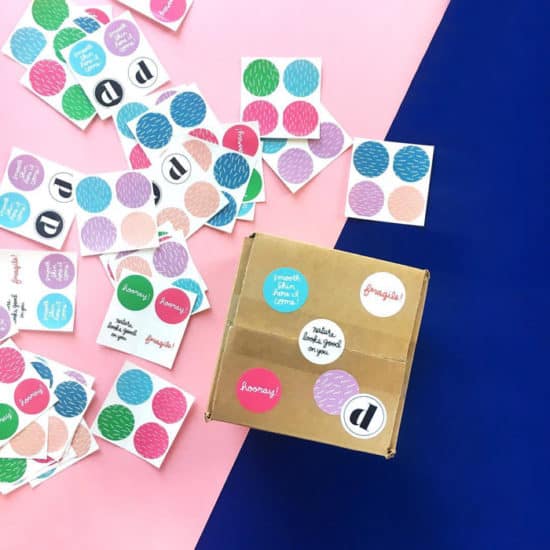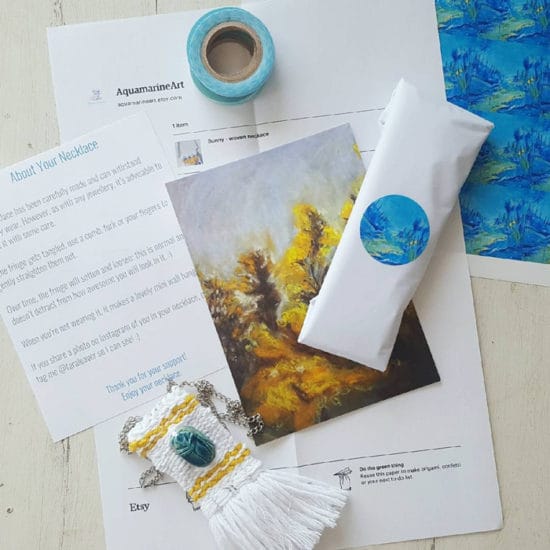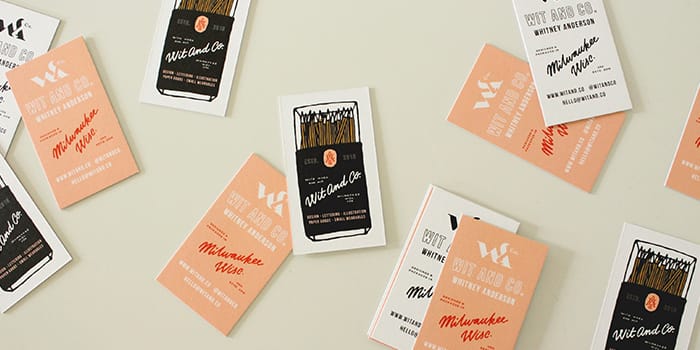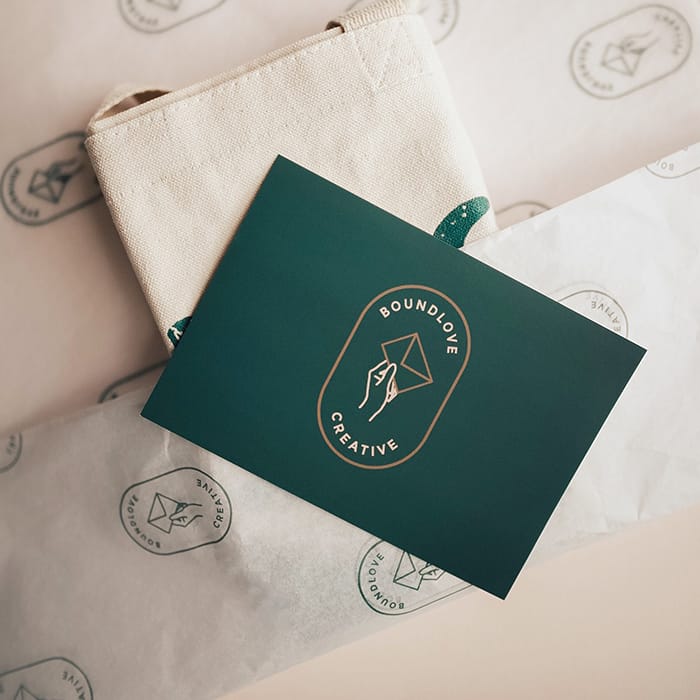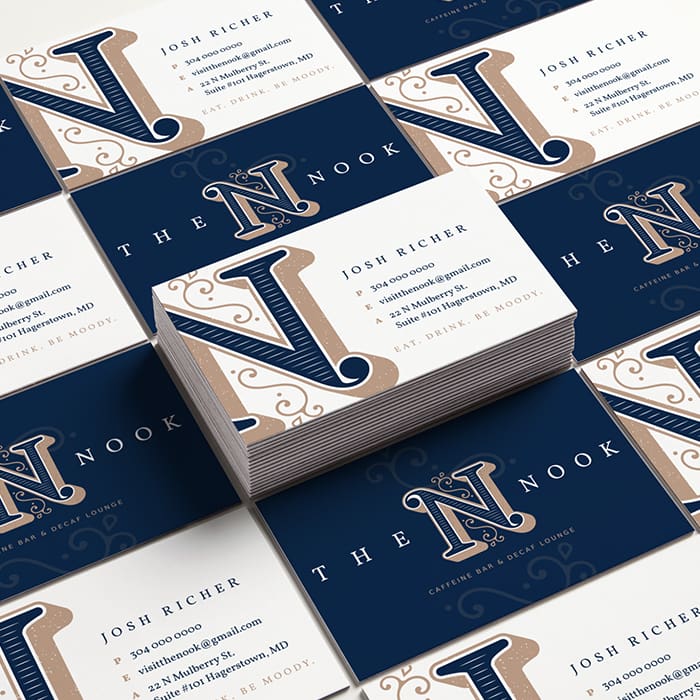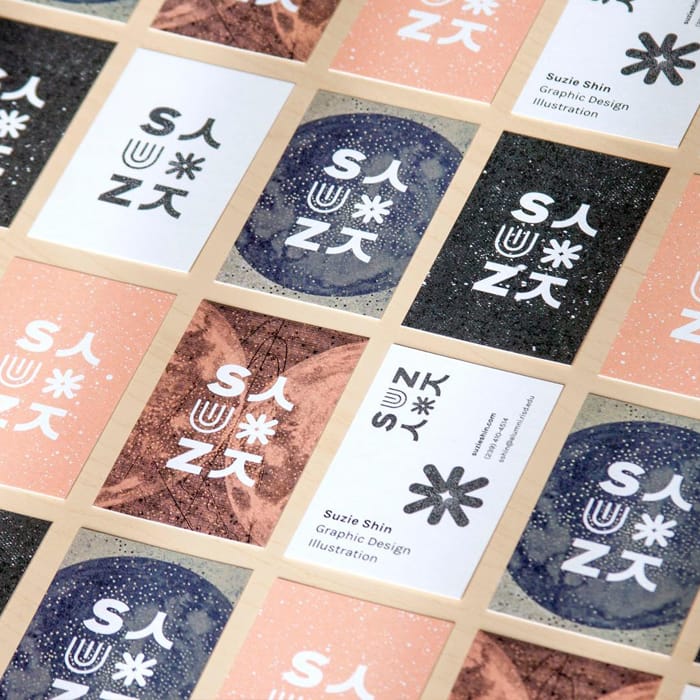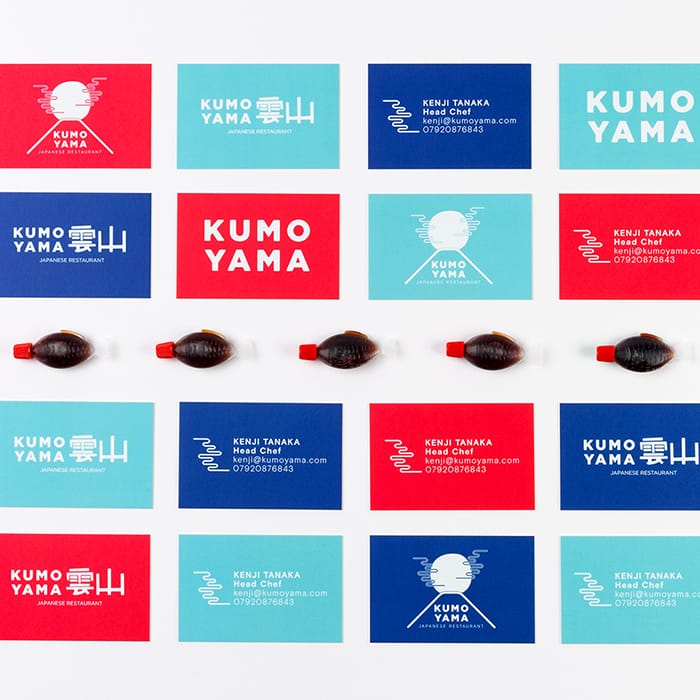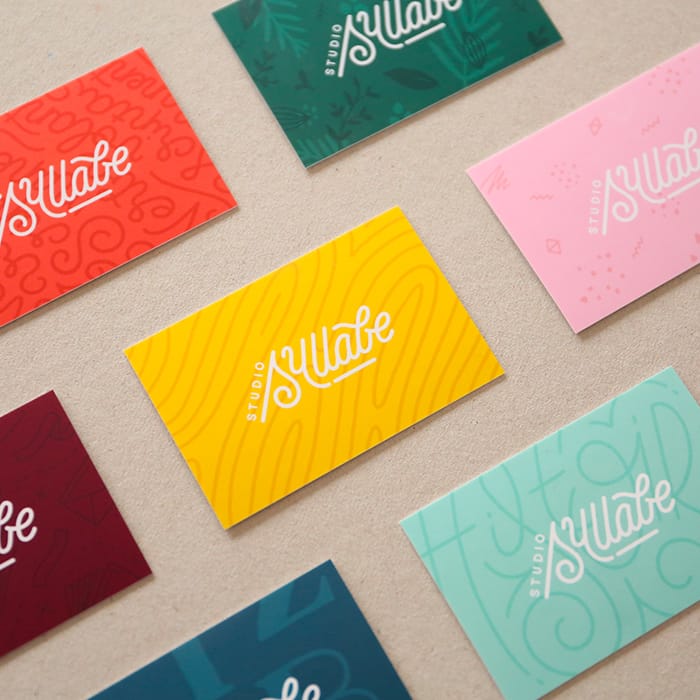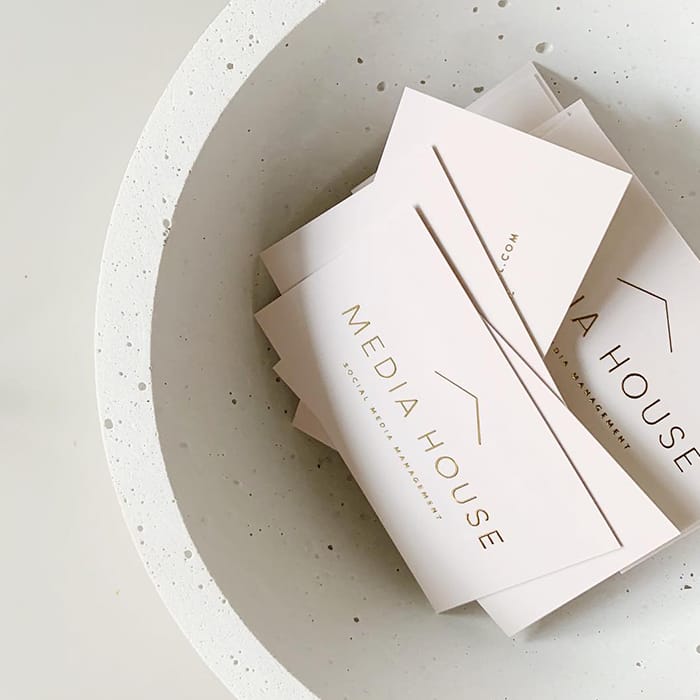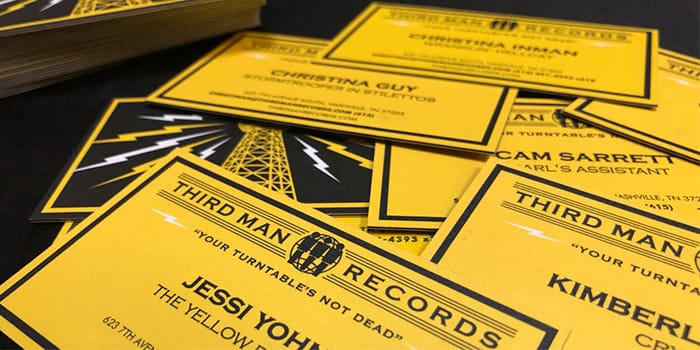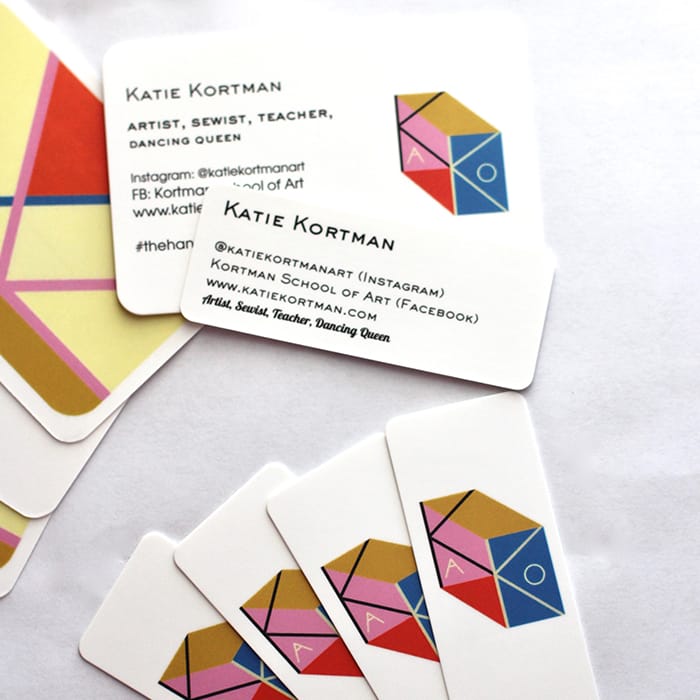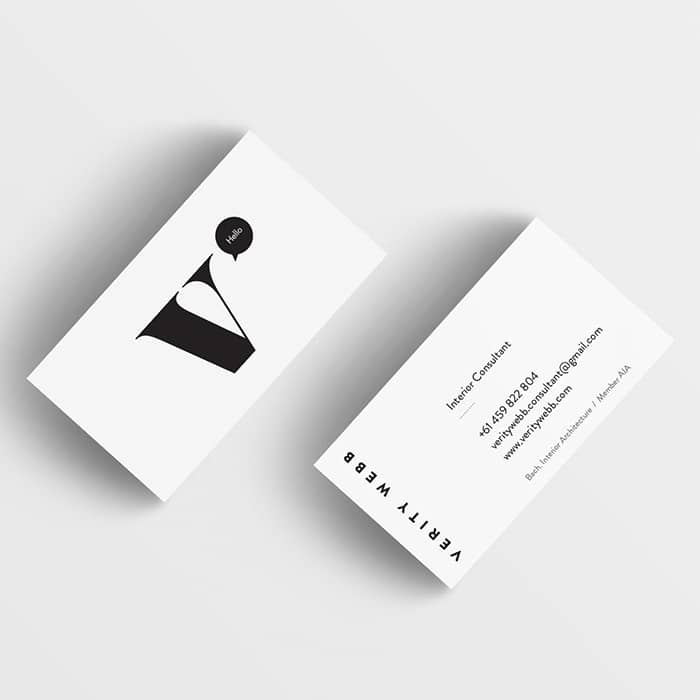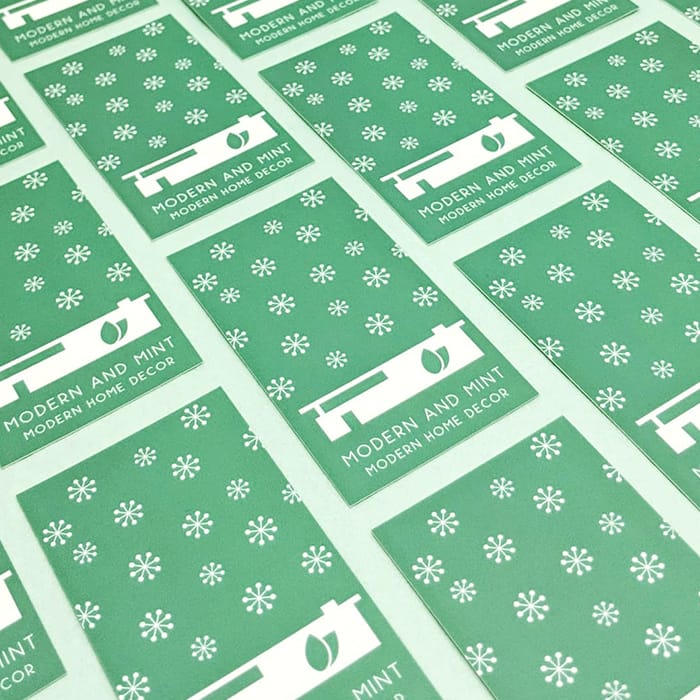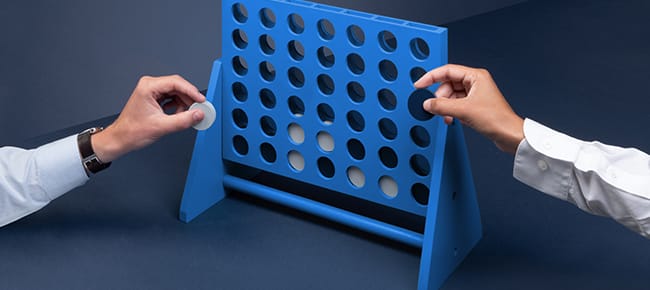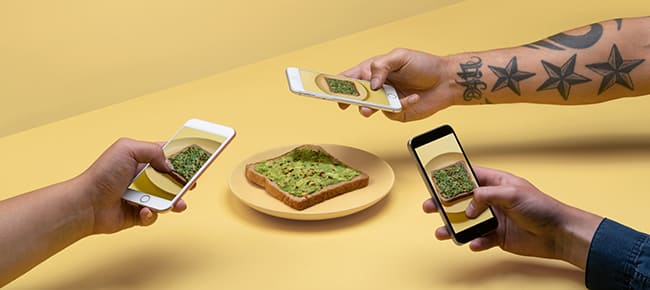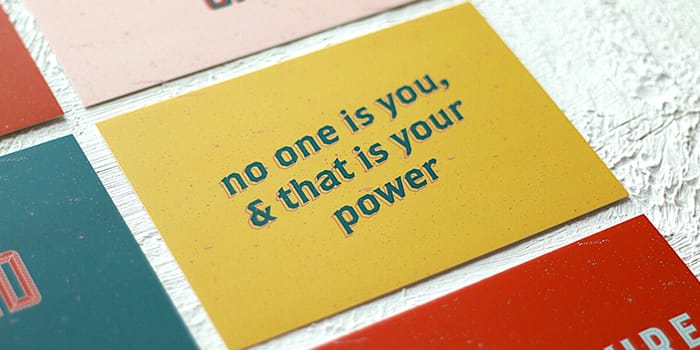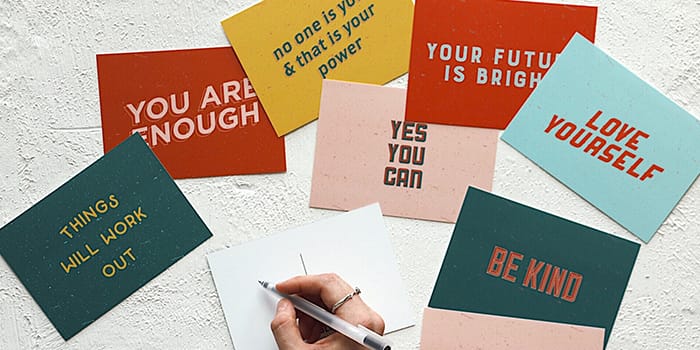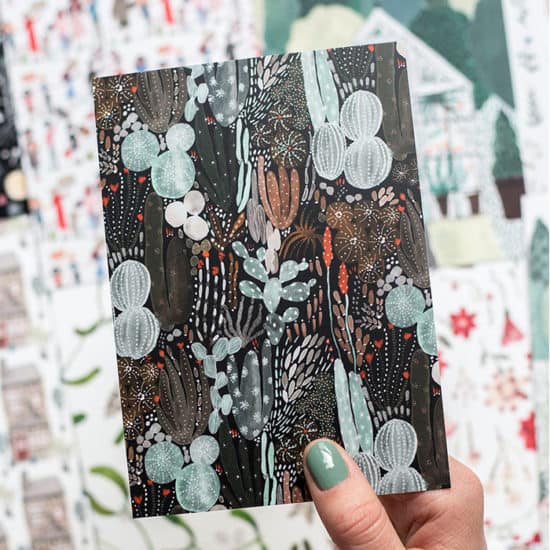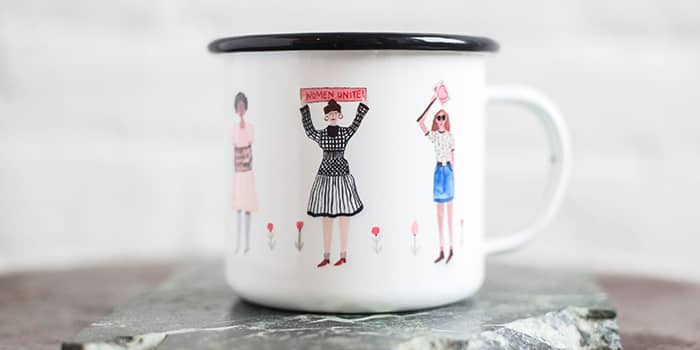Nine nifty ways to use a dotted journal (or planner)

There’s nothing plain about the fresh trend in the notebook world – it’s dots! Here’s all you need to know to get the most out of your MOO Hardcover Journal – with dotted pages.
Thanks to its versatility and less-is-more appeal the dotted notebook page has been quite ‘the thing’ recently – just ask the journalers of Instagram.
What makes a dotted journal different?
Traditionally, notebook pages came in three options: unruled, wide ruled or narrow ruled.
Unruled Blank pages have long been the preference of creatives looking to sketch and doodle.
Ruled lines meanwhile help those whose handwriting tends to slant off into oblivion, as can sometimes happen on a blank page.
Then there was the squared pages option, which often brought back memories (good or otherwise) of math homework. These made it easier to do things like draw diagrams or lay out a table of figures. But they also made pages look a little denser. They just didn’t leave much room for artistic flourishes or creative expression.
The dotted “bullet journal”-type pages however are the goldilocks option – a happy compromise between blank, ruled and squared pages. It feels like a blank sheet of paper… but with built-in autopilot.
What’s the purpose of a dotted notebook, you ask? Well. Regularly spaced dots can be used to keep handwriting on an even keel, add structure to a table or checkbox layout, or give you the backbone of a diagram. But they don’t make so much of an impact that they get in the way of drawings or make your page look cluttered.
Best of all, they’re easy to fade out of your photographs using filters and editing tools, so you can post images online and give the impression that you started with a blank page. We won’t tell. Promise.
9 ways to use your dot grid notebook
If you’re lucky enough to be the owner of a MOO Notebook or Journal with dotted pages, you may already be bursting with ideas for how to use it. Or you may be in search of a little inspiration. If so, we have you covered with a whole list of suggestions for how to use a dotted notebook.

1. As a daily journal
Now is the perfect time to start a daily diary. And a dot grid notebook is ideal. Record thoughts, impressions, memories and ideas – whatever helps you to de-stress or process your day. Just use the horizontal dots the way you’d use lines in a ruled notebook. It may take a little practice, but you’ll be into the swing of it after a line or two.
With a dotted journal, you have the added benefit of being able to break out of lined text into doodles or sketches when the mood takes you. Or you can box off different parts of the page so you can capture ideas in a non-linear way.
2. As a dot grid sketchbook
What else can dotted journals be used for? Dots can add an extra element of structure to your sketch practice. They can help with composition, as you’ll be able to better portion out the page for different parts of your drawing.
They can also lend a hand when it comes to perspective drawing and mapping out geometric forms like buildings and cityscapes.
Finally, you can use them to help you gauge proportions between different elements of your drawing. Say you’re drawing a group of people – if you can see that someone’s head is two dots high, you can use that two-dot measure for other people in the picture and keep everyone’s proportions the same.
If you’re using a dotted notebook as a sketchpad or dotted bullet journal, it’s important to have good-quality paper (our 100gsm Munken Kristall, for example) to work on. It really makes the difference. You’ll be able to use an eraser without buckling or wearing the paper, go over lines, and use ink without worrying that it will bleed through.
3. For practicing calligraphy
Caught the hand-lettering bug? If you’re into calligraphy, or if you fancy giving it a try, a dot grid journal is a great item to have in your kit.
Why use dotted paper? Not only will a dotted ruling keep your lettering perfectly horizontal on the page, it also helps you to keep even spacing between letters and words, and to make sure your letter forms (‘e’s, ‘a’s, the tails of your ‘y’ and so on) are consistent and beautifully even.
Unlike a lined pad, a dotted paper notebook’s ruling won’t cut through the downstrokes on under-hanging letters and create an unsightly interruption of your flowing script. It’s barely there and easy to fade out when you publish your finished piece on Instagram.
4. For doodles
Sometimes, you don’t want to create masterworks, or even finished drawings – you just want to let your pencil or pen go for a walk and see what happens. Doodling is a great stress-reliever and can help you through a creative block or a long meeting. So why not dedicate a whole dotted notebook to this noble pursuit?
Journals with dots instead of lines let your imagination flow freely while still providing helpful structure. Using dotted paper gives you a framework to doodle on – try joining the dots in random ways, using them to make the corners of squares and rectangles, or turning each dot into the starting point for a repeat pattern or shape.
5. As a planner
Want to give your day some order? Use that helpful dot grid to create a weekly planner with boxes for each day, or a daily calendar that helps you stay on track of your tasks from morning to evening. Since you’ve got a whole dotted notebook to play with, you could keep things fresh by trying different layouts and structures each week. That’s a benefit you just don’t get with pre-printed planners.
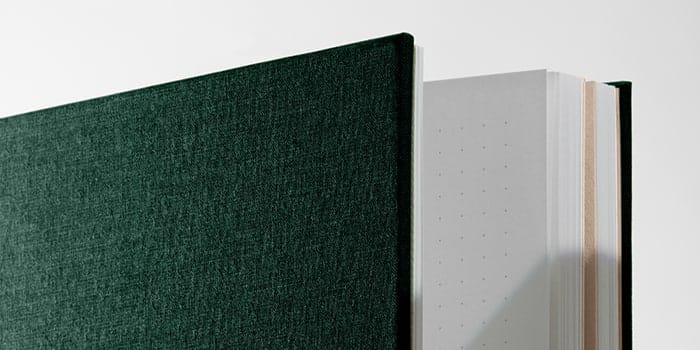
6. As a place for brainstorms
Dotted paper gives you the freedom to get your thoughts down on paper in whatever way makes sense. Use the dots to create flow-charts to help you map out business plans or projects. Write sideways and upside down, or use thought bubbles and boxes to separate themes and ideas from each other. The page is whatever you make it.
7. As a bullet journal
Bullet journaling could be credited with kicking off the dot grid trend, although there’s no rule saying the two have to go hand in hand. We’ve written previously about the power of the bullet journal system – essentially, it’s a minimalist form of keeping daily notes and planning your time. Given that dot grids are a minimalist form of page ruling, it’s unsurprising that they’re a great fit.
Use the dots in your notebook to form starting points for your notations, and use them to create a pleasingly well-proportioned index at the start of your journal.
8. For organized checklists
Got a to-do list to write out? Making a shopping list? Use the dots of your dotted page notebook to make four-cornered checkboxes for that authentic ‘tick off’ moment.
So satisfying!
9. For keeping record
The versatility of a dotted journal means you can easily create charts and graphics to record progress over time, and they’ll look neater and cleaner than they might on ruled or blank paper. Use the dots to form the basis of a bar chart, so you can fill in squares to represent your spending each month, or your progress through a book you’re reading.
You can also use the dots to create tables for columns of figures, ideal for doing business expenses or planning your savings for a holiday or vacation.
Explore our Wow from home range to help you stay creative and organized, whatever your situation.
Now more than ever, online interaction is key. From Facebook groups and Instagram feeds to old-school forums and message boards, there are endless ways to stay connected to your customers. Discover how to build your online community while creating a social media presence that lasts.
These days, there’s a pretty big overlap between an online community and a customer base, thanks to the wonders of social media. The folks who buy products, leave reviews and recommend you to each other make up one big online community across multiple channels. Not only are they a brilliant bunch (with excellent taste, of course) they can also be really valuable brand ambassadors.
With a dash of creativity and planning, even the smallest business can have an active and engaged online community. Here are 5 steps to growing your social media presence….
1. Set realistic social media goals
Creating a vibrant community space doesn’t happen overnight. You need to think of it as a long-term project with bespoke social media goals set (by you) along the way. Every time you answer a comment or post a picture, you’re adding another brick to your virtual clubhouse. It doesn’t have to take over your life – try a little-and-often approach, checking in every day and spending 5 to 10 minutes fielding any questions or comments.
2. Set up your community spaces
To keep things sustainable, it’s important to create your online community on a platform that suits your own style and way of doing business. Facebook is great for finding new audiences – its huge membership and easy sharing mechanism mean your posts can reach lots of people. Instagram is a match made in heaven for artistic or luxurious brands. And Twitter is your friend if you use wit, insight and knowledge to engage people.
Make sure all your community spaces include a prominent link or ‘About’ section that points back to your main online presence, whether that’s your own website, online shop, or another social channel. That way, not only is it easy to make a purchase, customers also get a choice of channels for staying in touch.
3. Nail your branding on social media
If you’re working across multiple platforms (Twitter, Behance and Facebook for example), think about how you’ll keep consistency across them all. Will you have a ‘main’ channel that automatically posts the same content elsewhere? Or multiple accounts which you use to link through to one another?
Whichever sites or apps you choose, use an account name that matches your brand or shop, and keep things visually consistent by customizing wherever possible with your signature colors and graphics. Your social media branding should marry up with the design of your Business Cards and other offline marketing tools like Postcards or Stickers.
4. Gather insights into your online community
Large companies spend thousands on data and research into customer preferences. As a small business, you can find out what your customers think and feel about your product using tools you already have – your eyes and ears. That’s the beauty of being small-scale!
Your customers know what they want and what they like – so why not ask them what they think of your products and whether they’ve got any suggestions for improvement? They’re the ones who use your products and services, so their advice and opinion is invaluable. And when feedback is given, make sure you respond.
Being a little smaller doesn’t mean you can’t use data as well. Most mainstream web-publishing and social media platforms have built-in data and analytics tools. These can give you handy metrics like visitor counts and a run-down of your most popular pages. Depending on the type of account you have you may also be able to access deeper-level data analysis about how people interact with your brand.
5. Be your own best community member
If someone asks a question on an Instagram post or via Twitter, reply as soon as you can. The online community is built around you, so make sure you’re available and actively participating in it when you can.
Don’t just wait for questions – a friendly comment or shout-out to your customers is bound to be appreciated. The same goes for behind-the-scenes updates and your personal tips and advice on getting the best out of your products.
Explore our Wow from home range and find everything you need to get your brand out there (even if you can’t get out there).
With a little thought (and a few fancy extras) you can send packages that make every customer feel like a kid on Christmas morning.
Run a small business? If you sell anything online, you’ll be pretty handy with a roll of packing tape. But packaging is about more than just boxes and bubble wrap. With just a bit of extra effort, you can give your customers an unexpected smile, and make them feel extra-good about their new products while you’re at it. In fact, this is now such a big part of online shopping, a quick search will find you unboxing videos from virtually every brand going. Power up your deliveries with unique packaging ideas, and you could find your customers making one about your products too…
What is unboxing?
The unboxing experience starts the very moment a customer receives their delivery and includes unpacking, discovering and examining everything inside. It captures that exciting, suspenseful feeling of the first moments with something you’ve wanted and waited for. No wonder unboxing videos are big among bloggers and vloggers, who open their packages in front of the camera so their watchers can share the excitement.
Why does packaging matter?
If you’re an online business, your packages may be the only physical touchpoint with your customers. As they open the package, they’re getting an all-important first impression of you. If your items are packed with care in thoughtfully chosen packaging, it shows you’re a careful and thoughtful seller who’s worthy of repeat business. A survey by dotcomdist.com found that 52% of consumers said they were likely to make a repeat purchase from a seller who uses premium packaging.
Interestingly, packaging can even affect their perception of what’s inside the box. A report from SealedAir (PDF download) found that 48% of online shoppers felt that better packaging meant a better product. One more reason to find some out-of-the-box packaging ideas!
How to power up your unboxing appeal
The great thing about unboxing is that it doesn’t take much to make a happy experience even better. Many of us love opening packages just to see the things we’ve ordered in real life. If there’s something more that we weren’t expecting, like a sample, a hand-written card or even some ribbons or stickers that add a personal touch, it’s nothing short of delightful. Here are some cool packaging ideas…
Bling up the box
The dotcomdist.com survey found that 4 out of 10 customers would share a photo of their online order on social media if it came in a unique, branded or gift-like box. So let your box design ideas run wild! Your box could feature brand colors, printed cardboard, ribbon or string ties, or an embossed logo.
If you’re watching your budget, some branded Stickers are an inexpensive way to make plain packaging your own. As Micaela from Drifter Organics tells us, “Small details like these are easy to overlook, but they really tie the brand together and contribute to the full brand experience.”
Rather than regular old bubble wrap, you could change things up with a filler inside your box. Some colorful padded bags, lightly scrunched tissue in your brand colors, or something to match a more sustainable ethos – such as biodegradable cornstarch pellets to cushion your products.
Add to the dramatic tension
Think about the unboxing experience. Imagine your favorite blogger opening up a package from you in their latest video. Lifting the lid, what’s the first thing they see? A postcard with your logo on it? A little gift? How about an inner wrapping of tissue paper tied with string, with a MiniCard that says “your treat is inside” or “we hope you love it”? The best unboxing ideas are those that spark a smile.
Treat them to something extra
Gifts and samples are always an unboxing win. The beauty of a free sample lies in its surprise value – even a sachet or a mini product is an unexpected bonus. You can also add thoughtful gifts unrelated to your products, like a treat-size pack of sweets or some miniature soap bubbles.
Include a personal touch
One of the best bits about selling online as a small business is the chance to add a personal touch to your orders. Unlike bigger stores, your shop’s smaller order volumes make it possible to make a real person-to-person connection. Handwritten “thank you for your order” notes and packaging cards are always nice to receive. Show customers they’re one-of-a-kind with unique packaging ideas!
A neat option is to write your notes on branded Notecards, Postcards or Flyers, so your customer gets all the information they need for future orders as well as your personal message. It can create a nice balance between personal and professional, as artist Tara Leaver tells us. “I love writing cards featuring my own work – it makes it more personal while helping to spread the word in a low-key way.”
Carry on the relationship
A joyful unboxing experience is also the perfect moment to introduce your customer to the rest of your brand, or remind them of the other things they spotted on your site. Include a catalogue or flyer with some of your star products on it to encourage them to come back and shop again soon.
And if your package includes a special Business Card with a discount on their next order, it’s the perfect recipe for the start of a long and beautiful friendship.
Looking for more packaging ideas? Meet the woman who built her business around unboxing.
If you’re working from home and suddenly find more time on your hands, you’re not alone. Rather than hitting Netflix, why not start that creative home based business you’ve always daydreamed about?
One great thing about working from home: it can be a huge time-saver.
Without the need to dress up smartly for work, travel to an office, or stay on premises during lunch, working at home can open up hours of free time during your week. It’s true – at least for those of us who haven’t also become temporary home-schoolers during this time.
So, why not use the opportunity to make something new happen in your professional life? Now could be the perfect time to explore some home business ideas and set up a new microbusiness alongside your day job.
How to find a new creative side project
If that had you pricking up your ears, follow these steps to find out what your side project could be.
1) Assess your strengths
When you’re starting a business from home, it’s important to play to your strengths. What are you naturally good at? Do you have a skill or talent that other people admire? Or is there something that you find easy where others need more time and effort to get it right?
At this stage it’s worth considering anything and everything that comes to mind. Even if it seems impractical. You may even end up going back to childhood and thinking about what you loved to do at school as you consider possible options.
2) Decide what you can commit to
You’ll need commitment as well as enthusiasm to start up a home based business and keep it running. If you’re sizing up a current creative practice as a possible business area, think about whether it would be as enjoyable if it became a daily requirement. Some things are meant to just be hobbies, and that’s OK.
Figuring out the answers might take a bit of time and reflection, so don’t rush this step. Talking it over with friends and loved ones or journalling it out might help you decide on a direction.
3) Explore the market
When you have a few ideas in mind, spend some time online researching your target business areas and seeing what other people are doing.
As well as looking at online shops and Etsy listings, see if you can join some online community groups and hear from others already in business. Your goal is to make sure your approach is original enough to stand out in the market, and that there’s enough demand among your potential customers.
Starting your business from home
Once you’ve decided on a business to do from home, it’s time to plan how you’ll fit it into your daily life. Whether your side-hustle is an artistic pursuit such as graphic design, illustration or painting, or a crafty endeavor like sewing, yarn-craft or card-making, here’s how to make space for it in your lifestyle.
-
Set time aside for your new microbusiness
If there’s one thing we know about home-working, it’s that boundaries are important. That’s even more the case when you’re starting up a side project alongside an existing main job.
Plan out your week in advance. Blocking off the time you need to dedicate to your main job and any family commitments like cooking or home-schooling sessions. Then look at where you can spend time on your creative side business. This may be in the evenings. Or early in the morning before the 9-5 begins. You might even be able to dedicate one or more weekend days – but make sure you leave time for some R&R as well.
Try to be specific about what you need to do and how you’ll fit it into the time you have available. For example, do you need to gather supplies, set up equipment, or get into the zone mentally in order to work?
-
Make space for your side project in your home
If your chosen pursuit is writing or digital art, you might not need much physical space to practice it in. But if you’re doing something hands-on like jewelry making or working with clay, you’ll need to set up a workspace that allows you to nurture your small business idea from home without taking too much time setting up or clearing away.
What used to be an occasional take-over of the kitchen table may now need a permanent spot elsewhere in the house or garage.
-
Include time for marketing
As well as planning time to practice your craft and turn out products and services, when starting your business from home, it’s a good idea to assign some of your time to marketing yourself.
Think about setting up a regular newsletter or blog for your side business, and stay active on social media so that potential customers can get to know you and ask questions. If your finances allow, you could also consider social media advertising to spread the word about your business.
Even if your business is run online, if you’re sending out packages to customers you can also do some offline marketing. Consider getting some business cards and postcards made up so you can include them in your delivery packages.
-
Develop and improve
As a microbusiness, there’s a good chance you’re working solo. That means you’ll need to reach out to other people for your professional development, training and networking.
Join online groups on platforms like Facebook, Slack or reddit to connect with other people in your line of work. It’s a great way to make contacts, find out what others are doing and keep up to date on the trends and practices developing in your new industry. YouTube and online courses can also be a great way to pick up new tips and techniques.
We’ve got lots more tips for small startups and home based businesses. Check out how to take great product photos for your online store and explore our new WFH range.
Designing a logo that really represents your brand is an exciting step, but where do you begin? We spoke to a group of designers, illustrators, and business owners on how they found their trademark.
Wit and Co.
Whitney Anderson founded graphic design company, Wit and Co. after taking the plunge into full-time freelancing. She now runs her design, paper goods and wearables business from her home in Milwaukee, USA.
“I love logos that continue to unfold the longer that you look at them, and have always been intrigued by how letterforms play together, so I looked at combining my initials in an interesting way. Since the first three letters of my surname are ‘and’, I wanted to try and reimagine the ‘A’ as an ampersand. I printed my final design on Luxe Business Cards because I love the beautiful matte finish and the texture of the paper stock is lovely.”
BoundLove Creative
BoundLove Creative is a design, content creation and branding business lead by graphic designer and one-woman-show, Amelia Houghton.
“My logo is an illustration of a hand holding a Greeting Card, because that was the first item I ever listed for sale. It’s features on my Business Cards and personalized Postcards which go into every customer order to thank them for supporting my business. I always receive compliments on how beautiful and high quality the cards are.”
Luke Tonge, co-founder of the Birmingham Design Festival
UK-based graphic designer, Luke Tonge, took a leap into freelance work which led him to co-found the first ever Birmingham Design Festival.
“Branding the festival well was absolutely key, and we wanted flexible designs that felt rooted in Birmingham. What emerged was a modern take on the craft heritage the city is famous for, with a hallmark system of carrier shapes we could use in endless configurations.”
The Nook
The Nook is a café and coffee shop that serves up speciality teas, artisan brews, and cakes from local bakers from their cozy corner of downtown Hagerstown, Maryland.
“We have a ‘take a book, leave a book’ culture in our shop, so we wanted our logo to echo traditional elements from classic literature with a modern twist to stand out. We translated our branding onto Super Soft Touch Business Cards – we love the quality of the finish! People we hand them out to are always super impressed with the tactile smoothness – I’ve even seen people rub them on their faces!”
Suzie Shin
Suzie Shin is an illustrator and graphic designer based in Chicago. After moving cities, she began a personal branding project to help boost her freelancing work. Her new branding combines elements of her heritage and design aesthetic.
“The inspiration for my logo came from my cultural background. My parents immigrated from South Korea to America, and like most immigrants, they had to decide on two names for their children: one from our culture, and one in English. I was named Suzie, and 수지 (pronounced “Sooji”). In homage to my deeply integrated Korean-American upbringing, my logo features my short nickname “SUZ” and the first characters of my name in Korean. The logo reveals who I am personally and artistically through the use of Korean characters, variable textures and color palette.”
Em Stokes
Em is MOO’s in house graphic designer, working at our London HQ. Tasked with creating a brand identity for a fictional sushi restaurant, she paired bold color with hand drawn graphic elements.
“Business Cards felt like the most natural place to begin as I could use this format to play with different combinations of the logo. I felt it was important to have a really clean and simple typography mark, as well as a more illustrative version. I thought Postcards would be cool as a nice printed graphic that might be picked up from an event that the restaurant could take part in, it’s the kind of thing I collect myself!”
Studio Syllabe
During her time working for a greeting card company, Mélanie Ramamonjisoa fell in love with lettering, and soon knew her creative calling was in visual identity and typography. Three years later, she created Studio Syllabe.
“My logo was initially hand drawn to show my love of lettering, then reimagined digitally. The curves and movement of the letters represent that, with me, brands can write their own stories. The Studio Syllabe branding has been carried through into their business cards: “I went for Super Soft Touch Business Cards because I wanted durable, resistant cards but with a buttery texture. Strong and soft – the perfect combo! It really represents me as a person.”
Media House
Hair-stylist Kailey Resinger founded Social Media Management and Content Creation business, Media House, to help small, local businesses elevate their visual identity.
“My cards give me the ability to introduce the artistic approach that Media House represents – professional, clean, modern, and fun! The Super Soft Touch texture of the cards is so luxurious, and the Gold Foil option was the perfect way to add a touch of shine.”
Third Man Records
Founded in 2001 by Jack White of The White Stripes, Third Man Records focus on keeping the physical aspects of music alive – whether it’s a vinyl record, book, or band t-shirt. Just like their brand ethos, their business cards carry a distinct analog feel.
“Third Man’s Business Cards were designed to mirror the old-fashioned letterpress cards, but with a unique contemporary twist. The merging of old and new is what our business is all about.”
Katie Kortman
After juggling life as mother with teaching, color-obsessed Katie Kortman decided to make a business from her two passions – art and sewing. She now runs classes from her home, while curating a colorful Instagram feed of her hand made garments on the side.
“My sister Caroline designed my logo. She wanted it to be dimensional – not flat – and for it to feel like something more dynamic than just my name. Why did we choose Rounded Corner Business Cards? They just look so much cooler!”
Bourne{creative}
With a background in fashion and digital design, Lesley Bourne specializes in providing branding, photography and web design services to his clients.
“When I designed business cards for my client, who is an interior stylist, I chose a minimal design and monochromatic color palette to convey a contemporary, clean style. The quality, heavy, Luxe Business Card stock gives her brand a really professional and premium feel.”
Modern and Mint
Modern and Mint is a small woodworking business that designs and creates home decor. With a mid century modern aesthetic, their founder Victor aims to create designs that will make a house feel like a home.
“I wanted a logo that made sense visually, looked unique, and demonstrated my design style and attention to detail. I went for the Original stock with a matte finish – a business card really can be the first impression, so I wanted to ensure that mine stood out from the rest.”
Feeling inspired to get creative? Print your logo to life on Business Cards, or check out our templates for some ready-made design wonders.
Social media is a business must-have, so why not do it with a stand-out tonal style? Here’s our guide to developing and using your unique voice on social.
Using social media to communicate with your customers is a skill – and one that deserves special attention if you want to do it well. Unlike a website, email or offline marketing, on social you’re not just broadcasting your tone of voice, but using it in two-way real-world conversations that are time-limited and fast-moving.
In this context, your tone of voice is a powerful tool, so it’s worth developing a tone of voice strategy for social that will suit the channel you’re using and the message you’re sharing.
Social media: the big four
When we say social media, we could be talking about any number of platforms, but usually it’s one or more of these major players.
The behemoth of the social media world, Facebook is excellent for sharing product news, company updates and campaigns. It’s also a popular channel for customer feedback and support, and the occasional complaint. Since the company purchased Instagram, the two have begun to share some features, such as Stories and hashtags.
Faster than the speed of opinion, Twitter is the sounding board for the world’s thoughts, including those of your customers about your brand. This is the place to address customer concerns and compliments early, and in a public sphere. It’s also the original home of the hashtag, and the place to use this viral tool to add reach to your campaigns.
The social network for business, LinkedIn is commonly used for thought leadership and company updates, plus news from the world of enterprise and commerce. It’s also increasingly popular as a place to recruit and network with potential hires.
Creative, lively and highly visual, Instagram is the place to share brand imagery, videos and pictures of your products in action. Its popular ‘Stories’ function allows you to upload mini campaigns that persist on your profile for a limited amount of time.
Promote your social channels on your Business Cards
How to develop your social tone of voice
If you’ve defined your brand values, they’re a great place to start thinking about how you want to sound on social. Is your brand casual and fun, aspirational and impressive, or down-to-earth and practical? These qualities should come across in your tone of voice guidelines to help support your brand and keep things consistent.
To some extent, your social tone of voice is going to be an extension of your brand culture and the way people in your company naturally interact. But you’ll also be formalizing and standardizing the way you communicate to your audience, so that everyone has a useful framework for delivering different kinds of messages. Here are some ways to do just that:
1. Map out your social spaces
Make a list for each of your social channels, with different message ‘types’, e.g. complaint response, job ad, news piece, product promo. You’ll use these to categorize your tonal examples and develop an approach for each situation.
2. Use examples to show, not tell
Find some examples of previous social posts that have been successful or have represented your brand well, and allocate them to post ‘types’ in your lists. Examples are a really powerful way to communicate your tone of voice internally, and they resonate with people in a more immediate way than descriptions such as ‘playful’ or ‘friendly’.
3. Build a tone-of-voice toolkit
With your social team, develop some useful phrases that can be used to reinforce your tone and answer common queries. For example, ‘we’ll pop your package in the mail right away’ rather than ‘we’ll dispatch your order today’. These can be really helpful in a time-limited situation, and while you don’t want them being repeated endlessly, they can take some of the effort out of crafting many responses.
4. Build in flexibility for various audiences
Remember to apply your tone of voice everywhere, from direct messages to speech in videos, so you have a consistent style that people can recognize and relate to. Of course different channels and audiences need slightly different approaches, so it’s good to flex your tone – as long as you don’t drop it altogether.
5. Develop four or five tonal values
These could be values, such as ‘friendly’, ‘witty’ or ‘empathetic’, that express how you want to sound. They should be overarching ideas that appear across different messages and channels.
Print your tone of voice toolkit onto Postcards
What are the business benefits of a well-thought-out social tone of voice?
Your tone of voice can work wonders for you on social media, helping you become more:
- Scalable
A defined tone of voice means you can scale up your social presence and have many different operators, all confidently representing your brand in a seamless way. - Responsive
With a tone of voice strategy in place, it’s easier to craft posts and responses and publish them in a timely way – essential for the fast-moving social landscape. - Recognized
As an extension of your brand, social media reinforces your company’s identity and improves brand awareness and recognition among your potential customers.
Keep your tone of voice alive
Once you’ve developed your tone of voice and defined how you want to sound on your different channels, you need to put it into practice. It’ll be used on a daily basis by everyone who posts to your social accounts, which means it needs to be accessible at a glance.
Your tonal values are a great way to do this, since they are easy to remember and can be jotted down or put Flyers around your office space.
It’s also a good idea to make sure your staff are well-versed in your tone of voice strategy from day one. Why not include a tone of voice training session or workshop when you’re onboarding new staff?
Create your Flyers now
We’ve got even more handy tips on how to take your brand socials to a new level.
Working at home means you’ve got total control over your work environment – so why not make it into a VIP experience with these daily self-care habits?
Whether your kitchen-table business is booming or you’re still getting things started, you need to take good care of its most precious asset – yourself. Combine these self-care tips with our secrets to home-working success and you’ll be unstoppable.

1. Make human contact
No matter how introverted you are, you’ll benefit from a little bit of human “contact” during your working day. Studies suggest that good-quality social connections have a direct impact on our health, with well-connected people living longer than their more isolated counterparts.
Home-working is solitary by nature, so make an effort to reach out. Text a friend, call your family, or even make some admin-type calls and be friendly with the person in the call center. Hit two birds with one stone and get in touch with some clients you haven’t worked with lately.
And if you’re a hybrid worker, check out our guide to self-care for startups.
2. Go for a wander out of doors
No matter how busy things are, you can afford to take a 10 minute walk around the block. If things are really hectic, take your phone with you.
Walking is a natural stress-reliever that will help work any tension out of your muscles. Psychologically, you benefit from a mini endorphin hit, plus the sense of perspective you get from observing the world around you (which still goes on no matter what’s happening in your inbox.)
Some people like a morning stroll before getting down to work for the day, while for others, taking a walk in the early afternoon can help stave off the urge to doze after lunch.
3. Look after your back
Sitting all day at a desk isn’t great for your spine, but unlike the average office worker, you have the option to try out back-friendly options like a standing desk or replacing your seat with an exercise ball. If you do prefer to sit, invest in the best quality work chair you can afford. If you’re on a budget, buying a lumbar support pad for an ordinary chair can help.
4. Food glorious food
Fact: if you were commuting to an office, you would be spending money on fares, fuel and probably the odd takeaway coffee too. Put the equivalent amount into a food-fund for yourself to pay for nice things to eat while working at home.
We don’t mean sugary snacks or junk food – this is all about making yourself feel great in the long-term. Instead, think exotic fruit, specialty breads, antipasto, cheeses and top-notch teas and coffees. Remember to keep your food-fund separate from the regular household grocery shop – this one’s just for you.
5. Feed your senses
Okay, we took care of taste in tip 4, but you have 4 other senses you can use to nurture yourself and boost your mood during a day working at home.
Feast your eyes on beautiful images on Pinterest or Instagram, or look through some illustration or photography books. Hug your pet (if you have one) or wrap yourself in your favourite jumper or blanket. Put on some music – classical tunes can boost your concentration, but the main thing is to enjoy the music, so if country and western is your bag, go for it.
For your sense of smell, gather a few fresh herbs from your garden or kitchen and inhale their scent, or if you have some, light scented candles to sweeten the air around you.
Find everything you need to get your brand out there (even if you can’t get out there) here.
From gallery-ready art prints to notes of encouragement, these Postcards are the perfect send-along.
When it comes to promotion, Flyers often get all the glory. But what about Postcards? Sure they’re a little bit smaller, but they pack an equal punch. Don’t believe us? Meet these three brands who used the humble Postcard in big ways.
Song Kang Art
Song Kang is a Portland-based artist whose intricate illustration style is both whimsical and scientific in detail. Song’s online store offers archival art prints and smaller merch that captures the crosshatched details of her illustration style. The store became a reality because Song––its namesake––needed a way to motivate herself to keep drawing. While her work is in stop-motion animation, she still wanted a purely creative outlet. “That’s when I revisited a medium that I have always found comfort and inspiration in,” Song said. “Pen and ink.”
One of Song’s favorite ways to get inspired is to take a walk… and get lost. “I walk to a store that is an hour away or to a hair salon that is on the other side of the city,” Song said. “I can really let my mind wander this way.” As a result, Song’s work is the reimagination of the places that she loves. “I include all the textures and details I’ve found,” Song said. “My drawings are environments for the viewer to navigate, to look closer and discover aspects of the image that are hidden within the subtle values shifts and crosshatched lines.”
Song uses Postcards as an option for those who enjoy her work but can’t buy the larger prints. She also uses them as a way to highlight the details in her work that might not be noticed otherwise. For example, her “Macroscopic” Postcard set is a collection of high-resolution, close-up shots that show every line and stipple of the original.
“I feel that Postcards are a really appropriate vehicle for my art,” Song said. “I don’t want my work to be restricted to gallery walls. I want it to reach a larger audience and be accessible to anyone who finds joy in the pieces.”
Put your prints on Postcards.
BoundLove
BoundLove is a graphic design and paper goods company who produce epic “Encouragement Postcards.” These bundles of goodness, created by founder Amelia Houghton, include eight cards with––you guessed it––encouraging words. They’re perfect for friends or family who are in need of a burst of motivation.
“For the Encouragement Postcards, I was inspired by a conversation that I had with some friends,” Amelia said. “One of them was looking for a new job, and was just feeling really down about the rejections. So I decided to make a set of Postcards for people having a bad day, that could be sent as a little reminder that they are good enough.”
Amelia feels like postcards are special because they take more effort to send than a text or email. “I’ve always loved writing letters and cards to people,” she said. “I want to get people to send mail to their friends and family again. It’s so much more meaningful to receive something in the post. “
If you check out the BoundLove Instagram, you’ll see that the love has been spreading around the globe. When people receive them, Amelia hopes that they remember their own value, and avoid comparing themselves to others––especially on social media. As for Amelia’s favorite Postcard? “No one is you, and that is your power.”
Spread the joy with Postcards.
Boccaccini Meadows
Sara Boccaccini Meadows is a freelance textile designer and illustrator based in Brooklyn, New York. After a brief stint as an English teacher in Seoul, South Korea, Sara returned to the US to pursue her passion in art and illustration. The move paid off—she soon began selling artwork to major brands such as Zara and Urban Outfitters. Her newfound success in the art world led her to start her own business under the name Boccaccini Meadows.
Sara’s unique illustration style comes from her explorations in nature. “I find so much inspiration on a hike or traveling to a new place,” Sara tells us. She keeps a sketchbook close by on her journeys to capture the moments that later become larger paintings or patterns. Sara’s inspiration has a quirky and whimsical result—a fusion of urban and natural scenery with an emphasis on small details and patterns. Truly a sight to behold.
The Boccaccini Meadows online shop offers original prints, mugs and iPhone cases that feature Sara’s distinct illustration work. With each order from the shop, Sara includes a Postcard print as a send-along. Using Printfinity to put a different design on the backs of each Postcard pack, Sara is also able to show prospective clients a “field trip” of selected works. “I love to show off the intricate details of my patterns and paintings through MOO’s high quality printing” Sara tells us. “I’ve had a great reaction to the cards so far.”





